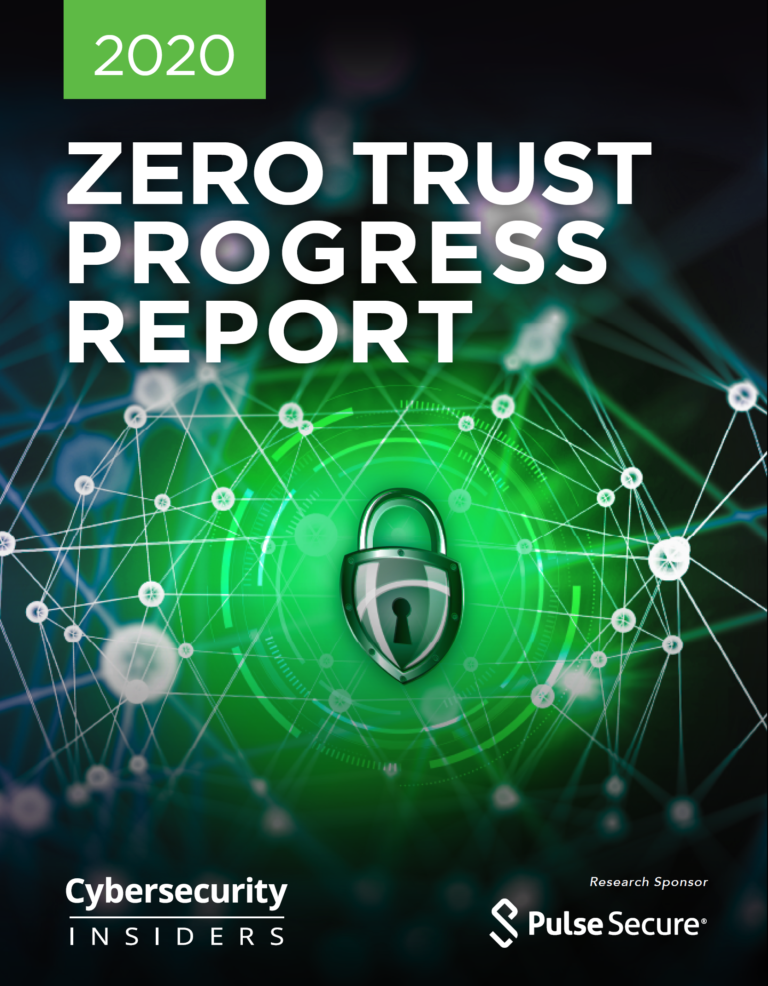Download the 2020 Zero Trust Progress Report by completing the form on the right.
Data breaches are on the rise, highlighting that no organization is immune from cyberattacks. One cause is that workforce mobility and cloud computing has placed most workloads beyond the shelter of corporate networks and traditional perimeter defense.
Enterprise adoption of the Zero Trust security model is growing as part of key initiatives to mitigate cyber risk. With its principle of user, device and infrastructure verification before granting conditional access based least privilege, Zero Trust holds the promise of vastly enhanced usability, data protection and governance.
This 2020 Zero Trust Progress Report shows how enterprises are implementing Zero Trust security in their organizations and reveals key drivers, adoption, technologies, investments and benefits.The 2020 Zero Trust Progress Report surveyed more than 400 cybersecurity decision makers, ranging from technical executives to IT security practitioners and representing a balanced cross-section of organizations of varying sizes across multiple industries. As 72% of organizations plan to assess or implement Zero Trust
capabilities in some capacity in 2020 to mitigate growing cyber risk, nearly half (47%) of cybersecurity professionals lack confidence applying a Zero Trust model to their Secure Access architecture.
Key findings include:
• Nearly equal confidence and lack of confidence in applying Zero Trust model in their Secure Access architecture (53% have confidence, 47% are not confident);
• Fifty-three percent plan to move Zero Trust access capabilities to a hybrid IT implementation;
• Over 60% find the Zero Trust tenets of continuous authentication and authorization, trust earned through entity verification, and data protection as most compelling for their organization;
• Over 40% expressed privilege management, insecure partner access, cyberattacks, shadow IT risks, and vulnerable mobile and at-risk device resource access as top challenges to secure access to applications and resources;
• Forty-five percent are concerned with public cloud application access security, and 43% with BYOD exposures;
• Seventy percent of organizations plan to advance their identity and access management capabilities;
• Thirty percent of organizations are seeking to simplify secure access delivery including enhancing user experience and optimizing administration and provisioning;
• Forty-one percent are looking to re-evaluate their secure access infrastructure and consider Software Defined Perimeter (SDP) – with the majority requiring a hybrid IT deployment and a quarter adopting a SaaS implementation.
Many thanks to Pulse Secure for supporting this important research project. We hope you’ll find this report informative and helpful as you continue your efforts in protecting your IT
environments.















